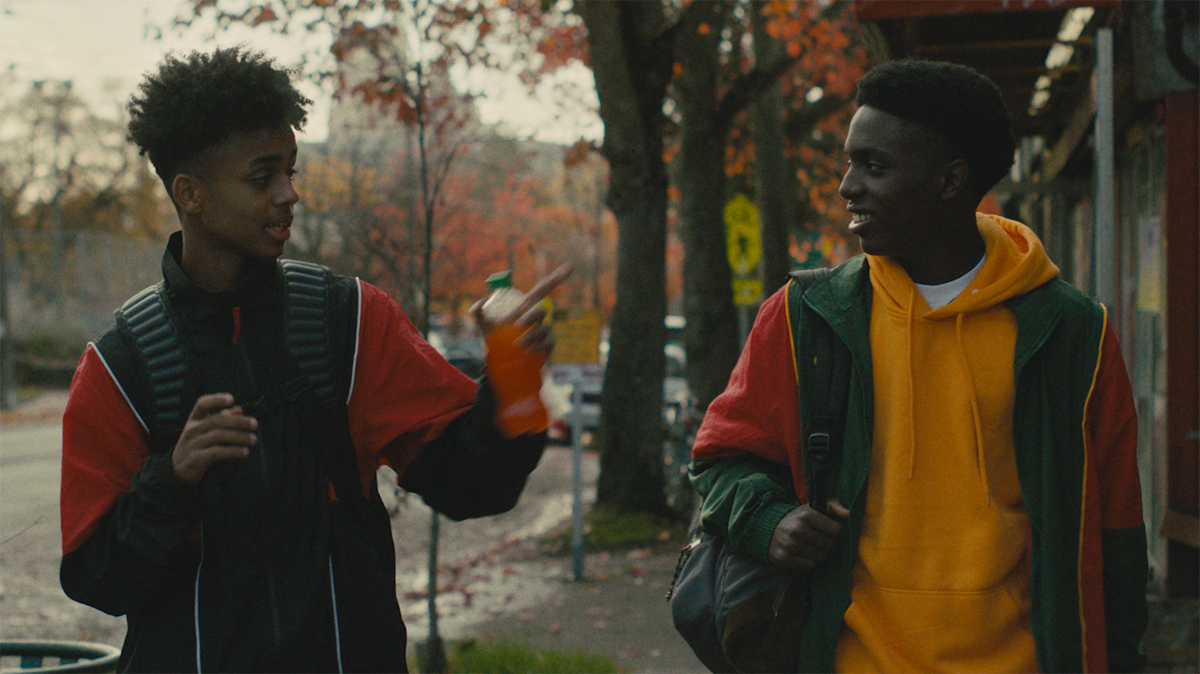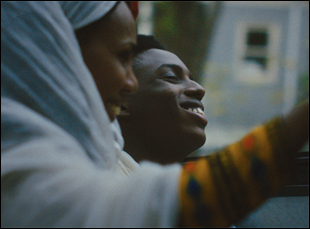When Zia Mohajerjasbi was preparing for the world premiere of “Know Your Place” in Seattle, the city where it’s set, he found himself in front of the empty lot where the Seven Gables Theater once stood. The arthouse staple in the University District had burned down after being abandoned a few years earlier, but for many including the filmmaker, it felt like home – quite literally, the onetime American Foreign Legion dance hall had a lobby that resembled a living room and the light fixtures inside the theater would ascend into the ceiling, with their warm, welcoming glow giving way to the dark for a bit of escapism.
“That was the theater when I was around seven, I got to go see my first Iranian film and that was the movie that made me realize what I wanted to do as an artist,” recalls Mohajerjasbi, who had been in the neighborhood to pick up posters for the film’s premiere. “So I’m standing there, getting ready to present our film and [I’m taking in] all of the shifts that even happened in the era of COVID or between principal photography and when the film was premiering — this whole lineage [of events] that led to the release of the film — and it’s peppered with so many different markers of this transition.”
Even before the pandemic when Mohajerjasbi had filmed “Know Your Place,” he could see that the Seattle he grew up in was disappearing before his eyes and in his extraordinary debut feature, he is able to capture a city in flux while bringing out its soul in the story of Robel (Joseph Smith), a teen tasked with delivering a suitcase full of necessities to a fellow Eritrean-American traveling back to the country by his mother Amuna (Selawit Gebresus) as all other aspects of their community besides generosity seem to be falling by the wayside. With developers beginning to move into their neighborhood, Robel and his friend Fahmi (Natnael Mebrahtu) are faced with navigating a metropolis where the ground is shifting beneath their feet in addition to other roadblocks in store for them as they attempt to get from one side of Seattle to another, made to feel like outsiders in their own hometown as cultural strongholds for the variety of people lured to urban centers start to lose their identity built over generations.
If it feels like doors are closing everywhere Robel and Fahmi go, “Know Your Place” comes across as the opposite, cracking open the vibrant universes that can exist within an individual apartment complex let alone a tight-knit part of town and although the Seven Gables may no longer be around, Mohajerjasbi is able to conjure the magic that once inspired him within its walls as he and cinematographer Nicolas Wiesnet stretch the frame as big as you suspect Robel and Fahmi can still imagine their opportunities to be, even as reality tries to hem them in and they threatened to be overshadowed by high-rises. In fact, thinking big has landed the film an international premiere at the London Film Festival where it is bound to cast a spell later this week following its Best Film win at SIFF and recently, Mohajerjasbi spoke about how he was able to catch lightning in a bottle with the production, not only preserving a moment in time but to prize sensitivity in working with the film’s cast to recognize all its complexities.
The idea for it started percolating in 2017, having grown up in Seattle, and also having made my short film “Hagereseb” that was set in Yesler Terrace, which also came about from a lot of my time being spent at place called Hidmo, which was run by an Eritrean-American woman named Rahwa Habte. [I met] a lot of my friends through those community spaces, making music videos, hanging out at Hidmo, developing a lot of friendships and relationships and community and just finding spaces of both shared experience. I feel like in some ways “Know Your Place” was the result of that explosion of work that I did personally in 2018 — I wrote the first draft of the screenplay in the first four months of 2018 and then willed everything into principal photography in the fall, so a lot happened really fast. But I felt like eight to 10 years in the making given all the ways in which our community in Seattle really came together to make this happen.
How much of a structure did you want to put on this? Did you feel like you were capturing dynamics that were already there?
From a dramatic standpoint, a lot of the details and the story of the film, all of that was very meticulously written out, but where I think the film comes to life and feels very naturalistic and organic is during the rehearsal process, people will read things and [I’d ask], “Is this actually how you want to say that?” Sometimes it’s “yes, I like that” or “actually I would say it like this,” and I’d collaborate a lot with the actors and workshopping and rehearsing and just pin down that naturalism and rewrite a significant amount of dialogue. And you’re always running out of time on a production, so I always tried to make it feel like they had all the time in the world and some of the cultural specificities, like the way in which the women would talk to each other in certain scenes, invoking the name of the Lord in a certain way, there’s a bit of an overlap in my experience [coming up] in a really large Iranian extended family, so I would write the initial scene with that experience and then when we’d go to rehearsal, we’d retune everything so that the folks in the scene were representing their own culture and it was specific and authentic to how it would feel in their household. We spent a lot of our time in the rehearsal process before shooting the film.
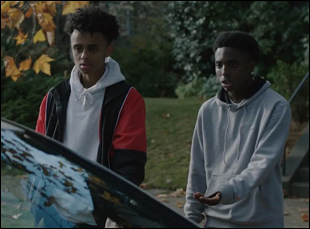
Futsum Tsegai, one of my dearest friends, is Eritrean-American and grew up in the Yesler Terrace and in collaboration with Saman Maydani, another friend of ours, we came up with this story idea for “Hagereseb.” And when I started hanging out in the Yesler Terrace more with Futsum, he introduced me to a friend of his who is also in “Know Your Place,” and it was shortly before they started tearing it down. Part of the mission of the film was I wanted to cast from the neighborhood and he’d been there 25 years at that point and knew every single kid, so Joseph was one of the kids that I ended up being introduced to. I didn’t really do auditions, and I really felt this kinship with Joseph. He has a heart of gold and a fairly shy kid and I was painfully shy as a kid growing up, but I could tell there was something very deep about the way he felt things.
Before getting to the script or anything, it was just doing some physical rehearsals of “Alright, can you walk down the block like you’re upset about something?” And I’d watch that and we’d talk about it. It was just so natural and we clicked in a way where we were able to really build some trust with one another. It was fun to play basketball and grab some banh mi from Seattle Deli, and we did a lot of that for that summer. Towards the tail end, we were having difficulty casting the role of Fahmi, so one of our friends Mieraf [Gebresellasie], who got involved later in preproduction, was related to Natnael and he didn’t grow up in Yesler Terrace, but she did and [said] he would come all the time, so I was like, “Okay, we’ll open this up a little bit.” When he came through, his personality is almost one-for-one for the way you see him on screen. He was immediately at ease, cracking jokes, reading the script and adding a line and I was like, “Man, this is really fun.” It was such a nice counter to Joseph, who has an inner life happening, and when Natnael plays a character, he’s very much a kid who’s interacting with the world and initiating things. The characters they play rhyme with their natural personality, and I think they’re able to bring that to the screen quite powerfully.
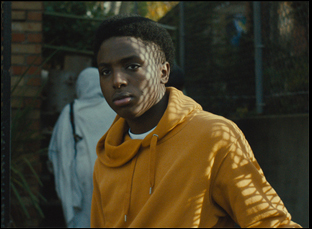
I’ve always loved just pushing the image as far as I possibly can regardless of the footprint of our production and one of the things from the early Blue Scholars and Macklemore videos that I was doing was the aesthetic of Seattle is always emotional to me – the way the light sits on things, especially at the turn of the season, the end of the summer into fall, that felt so appropriate for this film. I’ve always had a propensity for a more painterly compositions and Nico [Wiesnet] very much aligned with that, so one of the things that we arrived at in “Know Your Place” was that the performances are meant to feel very intimate and naturalistic, but we didn’t want the camerawork to also do that.
There’s this tendency at times when you’re collaborating with first-time actors that aren’t traditionally trained, knowing that the performance will be loose in some ways to keep the camera loose as well to pivot with them, but I think that would’ve done a disservice to the feeling that we wanted to communicate through the color palette and through the aesthetic, so we were very intentional through the framing and how we told the story visually. We really worked with our cast to make sure that they did hit marks, so people got into the rhythm of that, but that was its own learning curve and it was definitely a risk we were willing to take because we just wanted the film to have a longing feeling in the image. The image can hold a lot and do a lot of that emotional labor to keep the world feeling how you are feeling about it as a storyteller.
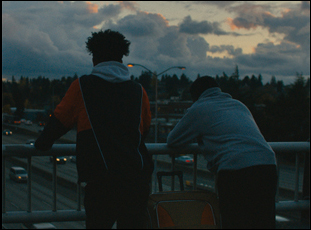
Yes, in so many ways. Yesler Terrace is now unrecognizable. It’s a mid-rise, going on high-rise construction. And Hidmo is no longer. Rahwa actually passed away during the pandemic, so it was not only lost in space, but [there was] genuine loss of community and people. In the face of such rapid transformation of the built environment, it exacerbates that feeling that community started to feel more illusory to me, like where is it and where are people going? Sometimes the same people might be there but the spaces available for people to congregate or the intention behind a space isn’t the same, so there’s less of a pulse that you can keep tabs on.
The last seven or eight years I’ve been living in Los Angeles. My wife’s from there, so I spending six to eight months in L.A. and then come back to Seattle and it’s constantly transforming. I think the movie has this feeling of grief that permeates the atmosphere and it’s trying to make sense of the personal experience of what it means when entire neighborhoods shift so dramatically. For someone like me, who has a relative degree of mobility or privilege – I can choose [where I go] when things get priced out, but I tried to capture the sense that we’re all experiencing this to different degrees and the emotional and spiritual toll that takes. It just sits in your mind and heart. Where our first short was set, that place is gone, so [there’s a sense] “Wow, this is just a memory now.”
“Know Your Place” will next screen at the London Film Festival on October 13th at the Institute of Contemporary Arts at 8:30 pm and October 14th at the Curzon Soho Cinema at 8:30 pm and 8:45 pm. It will also play as the closing night film at the Tacoma Film Festival on October 13th at the Grand Cinema at 7 pm.




